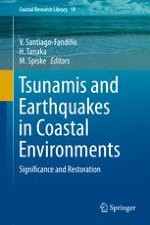2016 | OriginalPaper | Buchkapitel
14. Effects of the Great East Japan Tsunami on Fish Populations and Ecosystem Recovery. The Natori River; Northeastern Japan
verfasst von : Kinuko Ito, Ayu Katayama, Kazunori Shizuka, Norihiro Monna
Erschienen in: Tsunamis and Earthquakes in Coastal Environments
Aktivieren Sie unsere intelligente Suche, um passende Fachinhalte oder Patente zu finden.
Wählen Sie Textabschnitte aus um mit Künstlicher Intelligenz passenden Patente zu finden. powered by
Markieren Sie Textabschnitte, um KI-gestützt weitere passende Inhalte zu finden. powered by
